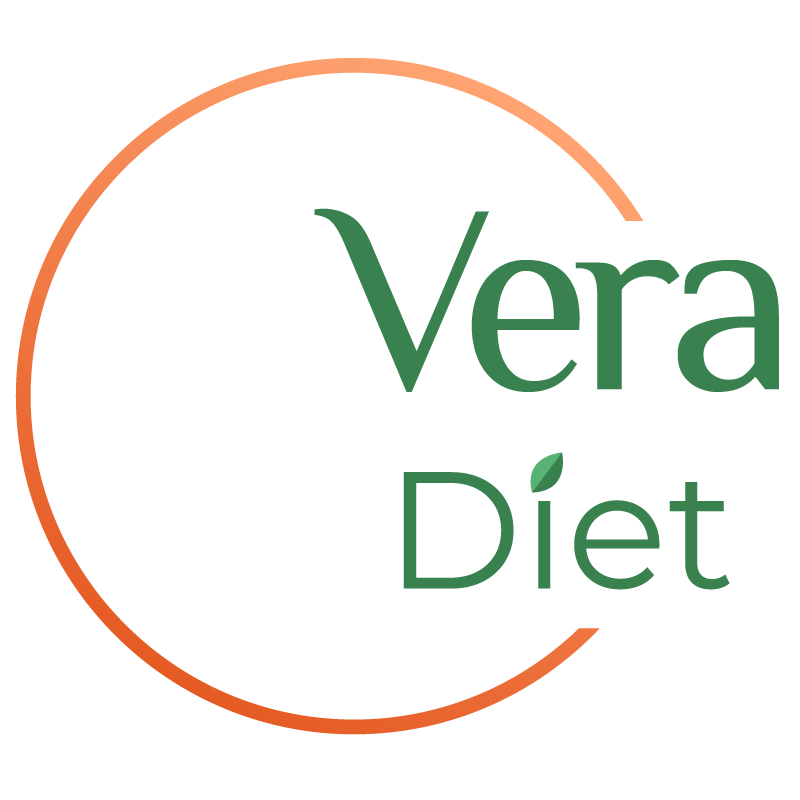Fiber is claimed to keep us full, feed our gut bacteria and just be a miracle nutrient that prevents cancer and that we all…don’t eat enough of. But is it all true, though? Let me take some time explain what fiber is, where to find it and what health benefits it has, backed by scientific research.
What is fiber?
Fiber or dietary fiber is a carbohydrate that can’t be digested. In other words, we don’t have enzymes to break down fiber – certain parts of plantfood – in smaller pieces so that it could be digested and absorbed by our bodies like other carbs. Fiber can be soluble or insoluble. Soluble fiber dissolves in water creating viscous gel that slowly travels down the GI tract and is fermented in the gut by microbiota – the bacteria living there. An example of a soluble fiber is pectin found in apple skin or oats. Insoluble fiber doesn’t dissolve in water but it attracts it in large amounts, accelerating the transit. An example of insoluble fiber is cellulose found in wheat bran. Most plant foods have a mix of the two types and their properties are often similar or complementary, so you don’t really need to know which food has which fiber because both are a huge part of a balanced diet!
Claimed fiber health benefits
Fiber can help us lose weight
Fiber keeps you full, so by increasing your satiety, you eat less (1,2). For instance, if you start your meal with a green salad, you are more likely not to finish your dessert since you’ll already be full. Realistically, it can’t help you drop 20 kilos, but it can help regulate your appetite and help you slightly reduce your energy intake.
Fiber can help you prevent type 2 diabetes
This one is super exciting to me. Fiber lowers glycemic index of whatever you eat with it. So basically, if you have a glass of juice it will spike your blood sugar levels, but if you have a whole fruit, it won’t because of its fiber. So, knowing this fact actually allows you not to feel guilty because you are having your dessert, as long as you eat it after a proper meal that includes vegetables and other fiber rich foods. Also, fiber binds some glucose which is especially interesting for people with insulin resistance and diabetes (3). A key to health and healthy weight is avoiding blood sugar spikes followed by sugar drops, and adding a good amount of fiber in your diet is the easiest way to do it. Btw, glycemic index and the mecanisms involved I will cover in a different article soon, so stay tuned.
Fiber regulates the transit
This one is kind of obvious. If you have constipation, add more fiber to your diet, especially insoluble fiber (best sources are cauliflower, green beans and green peas, figs, prunes, dried apricots). And, in case if you have diarrhea, focus more on soluble fiber like refined wheat, rice, apples, carrots. But if you have it regularly, consult your doctor.
Other fiber health benefits
Some research shows that high-fiber diet can reduce risks of colorectal cancer (4) and breast cancer (5). On top of that, high-fiber diet can reduce risks of heart desease by reducing blood cholesterol levels (6). There’s also research concluding that fiber can slightly lower blood pressure.
Fiber: best food for gut
And here comes the most promising health benefit of fiber, as it acts as a prebiotic. In other words, it is consumed and fermented in colon by good bacteria that has enzymes to break it down. So, thanks to fiber good bacteria can multiply ensuring. The byproducts of fermentaiton are short-chain fatty acids that improve gut health, immune system and even regulate central nervous system (7) and of course…gases.
Now we know that healthy microbiota is soo important. It helps preserve a healthy gut lining so, that unwanted molecules couldn’t pass the intestinal barrier and end up in the bloodstream increasing inflammation. Also, this topic deserves a whole article.
Where to find fiber
Yes, all whole fruit and vegetables contain fiber. As well as otherwhole plant foods like legumes (lentils, beans and peas), grains (especially whole grains), nuts and seeds. BUT there’s an important thing. You need to make sure you dring adequate amounts of water, otherwise fiber won’t be able to act properely.
Is there a right amount?
Current French recommendations suggest consuming 30 g of fiber per day. Another way to see it, is at least 5 serving of vegetables and fruit per day (1 serving = 80 g), making it minimum 400g. Let’s translate it into food quantity. I’m going to take the same menu I used in the article on fat and see if it contains 30 g of fiber.
Breakfast : whole-wheat toast with avocado and poached egg, plain yoghurt (6g of fiber)
Lunch: Green salad with olive oil, brown rice, salmon steak and 1-2 chocolate squares (7g)
Dinner: Baby carrots with some hummus +tomato based pasta with parmesan and basil. A fruit (11 g)
As a result, this menu covers 24 g of fiber, which is not enough. But it can be easily fixed by adding a snack of 20g of nuts and 2 tangerines. So, again this is not a crazy number as it can be attained by having 2 fruits, 3 portions of vegetables, a small handful of nuts and some whole grains. Legumes are also an excellent source.
Practically speaking
Fiber is great! No doubt about it. It DOES keep you full helping mantain healthy weight, prevent insulin resistance and diabetes and even some types of cancer. It’s a must for a regular transit, your gut health and immunity. You should have at least 5 servings of fruit and vegetables a day to cover the recommended 30g. But as you can see above, it’s not too hard to attain, as a part of a balanced diet. But, please, don’t stuff yourself with broccoli if you hate it, enjoy your fruit and vegetables!
Sources
- https://pubmed.ncbi.nlm.nih.gov/10721886/
- https://pubmed.ncbi.nlm.nih.gov/11396693/
- https://pubmed.ncbi.nlm.nih.gov/1663443/
- https://pubmed.ncbi.nlm.nih.gov/26269366/
- https://www.ncbi.nlm.nih.gov/pmc/articles/PMC5348370/
- https://academic.oup.com/ajcn/article/69/1/30/4694117
- https://www.frontiersin.org/articles/10.3389/fendo.2020.00025/full





One thought on “Fiber: ultimate health benefits explained”